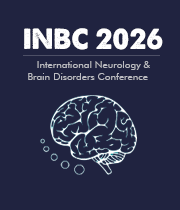Magnetic Resonance Imaging (MRI)
Magnetic Resonance Imaging (MRI) is a medical imaging technique that utilizes radio waves and magnetic fields to detect and map structures within the body. It is a non-invasive form of medical imaging that has become a valuable tool for diagnosing an array of medical conditions. MRI is especially useful to examine the anatomy and function of the brain, spine, joints, organs, and soft tissues. An MRI scanner consists of a powerful magnet surrounded by coils that create a strong magnetic field. This magnetic field is combined with radio waves and gradiometer coils that send and receive signals from the body. It is these signals that are then processed by the MRI computer to create an image. The strength of the magnetic field is important for producing detailed images, typically ranging from 0.5 to 3.0 Tesla. While typically used to produce images, MRI also has the capability of generating functional images. Through the use of contrast agents, MRI can detect changes in specific areas in the body to produce functional images that can indicate changes in tissue perfusion, oxygen saturation, and metabolic activity. By doing so, it can provide valuable information about medical conditions like stroke and metabolic disorders. In conclusion, MRI is an invaluable medical imaging tool for creating detailed images of the body’s structures and functions. It is a non-invasive and painless technique, while also having the capability to generate functional images that provide insight into the body’s metabolic processes. As such, MRI has become a valuable tool in aiding diagnosis and treatment of many medical conditions.

Joe Sam Robinson
Mercer University, United States
Robert B Slocum
University of Kentucky HealthCare, United States
George Diaz
Memorial Healthcare Systems, United States
Daniel Curry
Texas Children’s Hospital, United States
Zhenhuan Liu
Guangzhou University Chinese Medicine, China
Kiran Ghotra
Lake Erie College of Osteopathic Medicine, United States




Title : Atypical presentation of Juvenile myoclonic epilepsy in a 16-year-old female: A Case Report
George Diaz, Memorial Healthcare Systems, United States
Title : Narrative medicine: A communication therapy for the communication disorder of Functional Seizures (FS) [also known as Psychogenic Non-Epileptic Seizures (PNES)]
Robert B Slocum, University of Kentucky HealthCare, United States
Title : Nanoparticles passing the blood brain barrier to treat cancer, infection, and more
Thomas J Webster, Brown University, United States
Title : Managing healthcare transformation towards personalized, preventive, predictive, participative precision medicine ecosystems
Bernd Blobel, University of Regensburg, Germany
Title : Transcranial painless neurorehabilitation scalp acupuncture electrical stimulation for neuroregulation of autism spectrum disorder
Zhenhuan Liu, Guangzhou University Chinese Medicine, China
Title : The million-dollar workup
Zoe Reinus, University of Connecticut, United States